Is It Constitutional Now? How About Now? Or Now?
Three Big Things:
 1. After it became clear that state-sponsored prayer was no longer a realistic option in public education, states began experimenting with the idea of a “moment of silence” during which students could pray (although no one had ever suggested that they couldn’t).
1. After it became clear that state-sponsored prayer was no longer a realistic option in public education, states began experimenting with the idea of a “moment of silence” during which students could pray (although no one had ever suggested that they couldn’t).
2. Alabama, in particular, kept nudging the idea forward – first it was a “moment of silence,” then a moment in which students might choose to pray, then teachers leading students in “voluntary” prayer, etc.
3. Along the way, one federal judge acknowledged that this was akin to “establishing a state religion,” but determined that was perfectly fine because states could do that. The Supreme Court agreed with the first part of that decision. They did not go along with the second.
Background
In Stone v. Graham (1980), the Court shot down the required posting of the Ten Commandments in public school classrooms. In case anyone had wondered, the Constitution still frowned on pushing religion via the public education system.
But then Reagan took office, and a conservative revolution of sorts swept the nation. At the risk of overdramatizing, the Reagan Era wasn’t just a presidential administration. As President, he championed a sort of American Exceptionalism marinated in Book-of-Revelation Sauce. The passion and righteous zeal of his adherents at times pre-empted reason, law, or precedent. It was a social movement as much as a political shift, comparable to Kennedy’s “Camelot” in impact but quite distinct in its flavor. Evangelicals were emboldened while the media and courts were demonized. Liberals weren’t just political opponents, but America’s enemies – both deceptive and deceived.
It was in this climate that Alabama decided that American Christianity could simply no longer survive without their assistance. It was time to make a statement and test the limits of this silly “wall of separation.” If their righteous fury just happened to appeal to a widely conservative voting base, well… thy will be done.
A Moment Of (Insert Options Here)
In 1978, Alabama passed legislation calling for a “moment of silence” at the start of each school day to allow “for meditation.” They weren’t alone. Many states had instituted some variety of the “moment of silence” after Engel v. Vitale (1962) and Abington v. Schempp (1963) had made it quite clear that overt theological indoctrination or proselytization by representatives of the State were a big “no-no” during the school day.
The “moment of silence” was thus a symbolic move as much as anything. Few non-politicians would argue that taking 5 – 7 seconds (or even the full minute required by some versions) to sit in awkward silence has a measurable impact on students’ mindsets or willingness to learn. Students, of course, had never lost the right to pray whenever and wherever they chose, so long as they did not willfully disrupt classes or become overly aggressive towards the uncooperative. (In other words, they were expected to be better behaved than their political leaders.)
What the “moment of silence” allowed legislatures to do, however, was to step right up to the line of church-state separation and dare the courts to do something about it. Legislators sponsoring these bills often said as much from the floor, dropping subtle little hints like, “We’re doing this because we want to get prayer back into public schools and we dare the courts to do anything about it.”
This reality alone would have been enough to kill any chance of proposed legislation surviving the “Lemon Test,” the first stage of which was that legislation must have a valid secular purpose. It’s possible none of them knew this, but it seems more likely they simply had ulterior motives for pushing the issue anyway. In Alabama, at least, that’s exactly what they did.
After a few years of a “moment of silence” went by without recorded difficulty, Alabama took things a step further. In 1981, the state legislature updated the statute so that the moment of silence would be presented each day as a time “for mediation and voluntary prayer.” Their momentum building, they upped their game yet again in 1982 and instructed teachers to lead “willing students” in a state-written prayer.
That part, not surprisingly, finally triggered the anticipated backlash.
Pray Or Be Prey
Ishmael Jaffree had three kids in Mobile County Public Schools – two in second grade and one in kindergarten. He protested the state-designed prayer, starting at the building level, but to no avail. Although he had plenty of established case law on his side, he didn’t initially focus on the abstract constitutional issues in play. Jaffree’s primary concern was that his kindergartener was being targeted by other kids for not participating in the prayers. His five-year-old was essentially bullied for not falling into line with state-mandated religious activities, and teachers refused to do much to stop it.
He wasn’t alone. In a similar case going on in West Virginia at the same time, a Jewish student was challenged by peers for quietly reading during the “moment of silence.” He needed to pray, they told him, or he’d “go to hell with the rest of the Jews.”
Yes, the prayer was technically voluntary – but as anyone in education knows, “voluntary” can mean many different things. As had been demonstrated a generation before when young Jehovah’s Witnesses quietly refused to pledge their allegiance to the American flag, it matters whether such choices are defended by those in power. There will always be those who hurt others verbally, physically, or otherwise for not sharing their nationalism or their faith, but there will be far more hurting going on when those in the minority are “otherized” by the State (at any level) because of their beliefs.
Establishing A State Religion?
In an interesting wrinkle, the federal district judge who heard this case as it worked its way through the system chose to ignore precedent and acknowledge that while, yes, Alabama was in effect “establishing” a state religion, they were perfectly within their rights to do so. While the federal government was constrained by the First Amendment, the states were not. “Alabama has the power to establish a State religion if it chooses to do so,” he explained. He even had a few pages of convoluted historical analysis to back this up.
Needless to say, that one caught everyone on both sides pretty much off guard. The decision was quickly reversed by the 11th Circuit Court of Appeals, and the case – not surprisingly – eventually ended up in the Supreme Court. It had already been determined in the lower courts that the first version of the law – the “moment of silence” from 1978 – was constitutionally acceptable. Since no one was disputing that, the Supreme Court acknowledged then ignored it. The Court of Appeals had already declared both the second and third versions of the law unconstitutional based on having no legitimate secular purpose. The Supreme Court accepted without debate that determination regarding version three – where teaches led willing students in a “voluntary” prayer.
What remained to be determined, however, was that middle version – the one about “voluntary meditation or prayer.” Was this establishment, or would shutting it down be a violation of free exercise?
The Decision
The Court determined 6 – 3 that Alabama, in their 1981 version of the “moment of silence” law, had violated the Establishment Clause of the First Amendment as applied to the states via the Fourteenth. They cited testimony from the lawmaker sponsoring the bill, who was – to his credit – upfront about its purpose. Because the changes implemented in 1981 clearly had no valid secular purpose, as required by the “Lemon Test,” the law was unconstitutional.
Justice Sandra Day O’Connor wrote an interesting concurring opinion, supported (but not officially joined) by Justice Lewis F. Powell in his own. O’Connor began by reminding everyone of a fact often lost in the political rhetoric: nothing decided by the Court in any way limited the rights of students to pray individually or collectively at school or anywhere else, so long as they were not overly disruptive to the school day. She used the rest of her concurrence to address two facets of Wallace she believed required a little jurisprudential elaboration. In her own words:
I write separately to identify the peculiar features of the Alabama law that render it invalid, and to explain why moment of silence laws in other States do not necessarily manifest the same infirmity. I also write to explain why neither history nor the Free Exercise Clause of the First Amendment validates the Alabama law struck down by the Court today.
Her historical analysis is interesting enough. Along the way she defends the continued use of the “Lemon Test” while suggesting perhaps it would benefit from some polishing or updating to help maintain its usefulness.
The more relevant part for states and districts post-Wallace, however, is her discussion of similar “moment of silence” laws which may share the goals and even the verbiage of Alabama’s but not its background. In other words, how would this statute – or something very similar – fare if passed without being preceded by the announcement it was intended to be evangelical and almost immediately followed by an “oh just pray with them already!” update? The short version was that they’d probably be fine if they simply avoided being quite so transparent about their religious goals.
While O’Connor expressed confidence the Court could tell the difference between sincere efforts at secular legislation and thinly veiled movements towards state-sponsorship of religion, it’s not much of a leap to infer that the real lesson was that politicians should be a bit less forthcoming about their motivations for this sort of legislation. In short, Alabama had simply made it too obvious what they were trying to do.
Dissents
Each of the three dissenting justices wrote a separate opinion. Justice White’s is brief and not particularly enlightening. The other two, however, are both scathing and poignant. As the balance of power in the nation’s highest court continues to shift, it’s quite possible they’ll find new life in 21st century jurisprudence. It’s not inconceivable they could soon represent the majority view rather than the outraged minority.
Chief Justice Warren Burger primarily disagreed with the idea that the option of voluntarily praying during a moment of silence qualified as government coercion towards religion. He cited other examples of times religion appeared in government functions without great trauma. Burger was particularly unimpressed by the Court’s citations of the law’s sponsor as proof it lacked a valid secular purpose.
Burger pointed out that the comments came after the bill’s passage and were accompanied by an assertion by the same legislator that he simply wanted to make the point that students had every right to pray in school if they so chose. Most significantly, in Burger’s mind, there was no evidence that the comments of one legislator after-the-fact in any way reflected the reasoning of the majority who’d voted to support the legislation in the first place.
Finally, for good measure, he mocks the Court’s use of the “Lemon Test,” calling it a “naive preoccupation with an easy, bright-line approach for addressing constitutional issues.” In short, Burger thinks the majority’s reasoning is absurd and their reactions completely out of proportion to circumstances, and he’s not shy about explaining precisely why.
Justice William Rehnquist (who will eventually become Chief Justice) takes an entirely different approach. His dissent undercuts the validity of the “wall of separation” imagery as an accurate representation of the goal of the First Amendment’s religion clauses to begin with. Most of his dissent is taken up in extended historical analysis of the origins of the Amendment and how very much NOT THERE Jefferson was the entire time. He also cites multiple examples from early American history in which the same men who wrote and ratified the First Amendment clearly didn’t seem to think it prohibited the federal government from proclaiming days of prayer or thanksgiving or otherwise acknowledging the role of the Almighty in their affairs.
It’s a pretty impressive historical case.
In short, Rehnquist prefers Madison’s approach to the “establishment” and “free exercise” clauses – protections from official government religions mandating one flavor of Protestantism over another and severely restricting private religious behavior. The idea that any sort of “wall” – metaphorical or otherwise – was ever intended to be erected between church and state was absurd, according to Rehnquist.
Aftermath
Many other states had similar laws on the books, and others have added them since, without serious constitutional challenge. A “moment of silence” is fine in public schools, as long as there’s no overtly expressed pressure to pray. There’s little to indicate that the 5 – 7 seconds of awkward silence typically beginning morning announcements actually accomplish anything in terms of mentally or emotionally preparing students for the school day, but effectiveness is not part of the “Lemon Test.” All it takes is a plausible assertion of valid secular goals.
Calm, focused students fit that requirement.

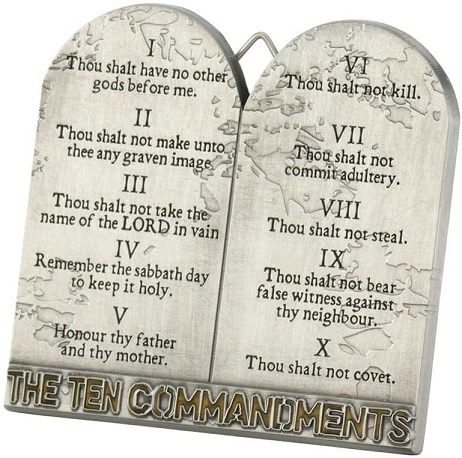 The Supreme Court’s decision in Stone v. Graham was announced on November 17th, 1980. Less than two weeks earlier, Ronald Reagan had been elected President of the United States, initiating what would later be called the “Reagan Revolution” – a resurgence of conservative values and policies anchored in an idealized past. The events leading to Stone began years earlier, but its outcome sent a message to the faithful in the 1980s similar to that of Engel v. Vitale and Abington v. Schempp two decades before: American’s fundamental values (meaning public promotion of Christianity) were under attack by intellectual elitists… aka “liberals.” And some of them wore robes.
The Supreme Court’s decision in Stone v. Graham was announced on November 17th, 1980. Less than two weeks earlier, Ronald Reagan had been elected President of the United States, initiating what would later be called the “Reagan Revolution” – a resurgence of conservative values and policies anchored in an idealized past. The events leading to Stone began years earlier, but its outcome sent a message to the faithful in the 1980s similar to that of Engel v. Vitale and Abington v. Schempp two decades before: American’s fundamental values (meaning public promotion of Christianity) were under attack by intellectual elitists… aka “liberals.” And some of them wore robes.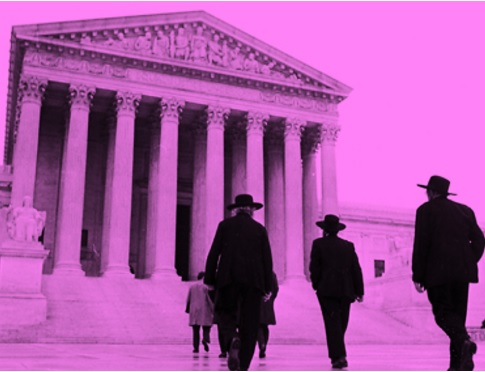
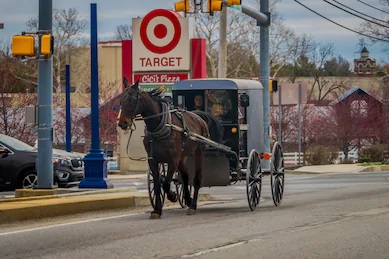
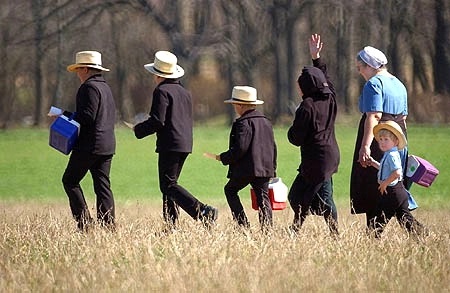
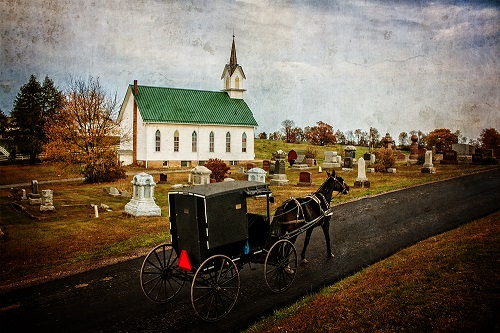
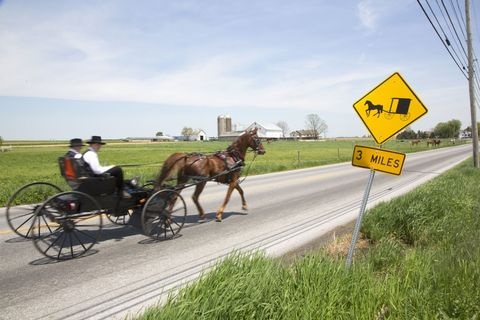
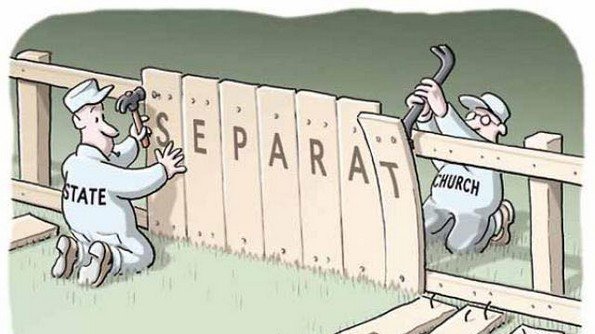
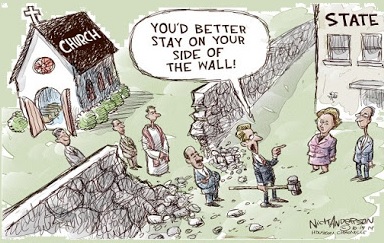 The Board of Education in Champaign, Illinois, allowed a local religious organization consisting of clergy and other volunteers to come into their public schools and teach religion classes during the school day. The organization, calling itself the Champaign Council on Religious Education, offered Protestant, Catholic, or Jewish options. The classes were “voluntary,” and any expenses were paid for by the Council, not the school district or parents.
The Board of Education in Champaign, Illinois, allowed a local religious organization consisting of clergy and other volunteers to come into their public schools and teach religion classes during the school day. The organization, calling itself the Champaign Council on Religious Education, offered Protestant, Catholic, or Jewish options. The classes were “voluntary,” and any expenses were paid for by the Council, not the school district or parents.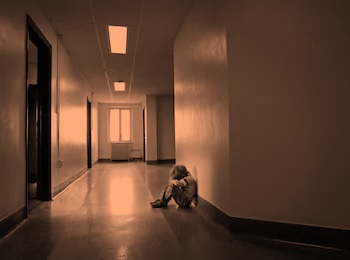 McCollum’s case reached the Supreme Court in 1947, the same year Everson v. Board of Education was decided. In Everson, the Court determined that state assistance to parents whose children rode public busses to school was fine, even though that assistance included families utilizing parochial schools. Everson was the first case of its kind to reach the Court and involved difficult questions about what the “wall of separation” meant in practice when applied to state and local government via the 14th Amendment. Plus, it hadn’t been decided at the time McCollum first began pursuing her case in the courts. It’s unlikely she or anyone else involved had even heard of it yet.
McCollum’s case reached the Supreme Court in 1947, the same year Everson v. Board of Education was decided. In Everson, the Court determined that state assistance to parents whose children rode public busses to school was fine, even though that assistance included families utilizing parochial schools. Everson was the first case of its kind to reach the Court and involved difficult questions about what the “wall of separation” meant in practice when applied to state and local government via the 14th Amendment. Plus, it hadn’t been decided at the time McCollum first began pursuing her case in the courts. It’s unlikely she or anyone else involved had even heard of it yet.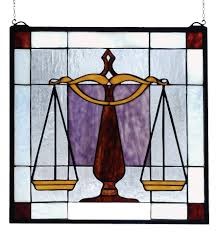 When McCollum’s case reached the Supreme Court, a supportive amicus curiae (“friend of the court”) brief was filed by none other than the Baptist Joint Committee for Religious Liberty. This group was in some ways the intellectual and spiritual descendants of those whacky Danbury Baptists who a century-and-a-half before had written to President Thomas Jefferson about the need for protection from the State. Jefferson’s response coined the phrase “a wall of separation,” which quickly became canon in interpreting the two church-state clauses of the First Amendment.
When McCollum’s case reached the Supreme Court, a supportive amicus curiae (“friend of the court”) brief was filed by none other than the Baptist Joint Committee for Religious Liberty. This group was in some ways the intellectual and spiritual descendants of those whacky Danbury Baptists who a century-and-a-half before had written to President Thomas Jefferson about the need for protection from the State. Jefferson’s response coined the phrase “a wall of separation,” which quickly became canon in interpreting the two church-state clauses of the First Amendment.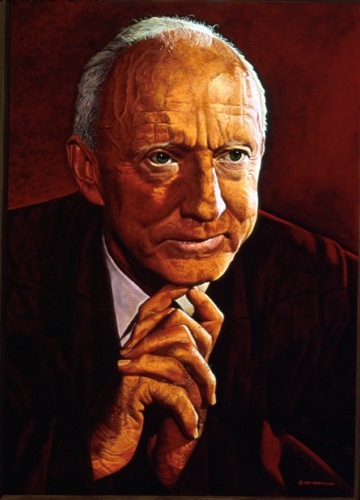 The Majority Opinion
The Majority Opinion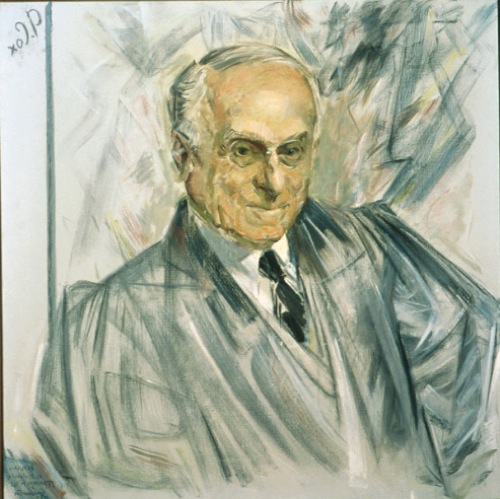 Frankfurter’s Concurrence
Frankfurter’s Concurrence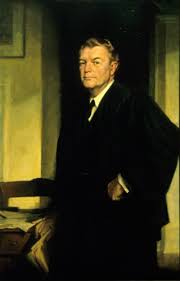 Jackson’s Concurrence
Jackson’s Concurrence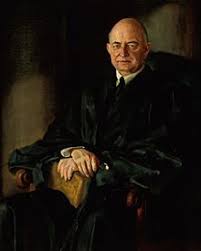 Reed’s Dissent
Reed’s Dissent